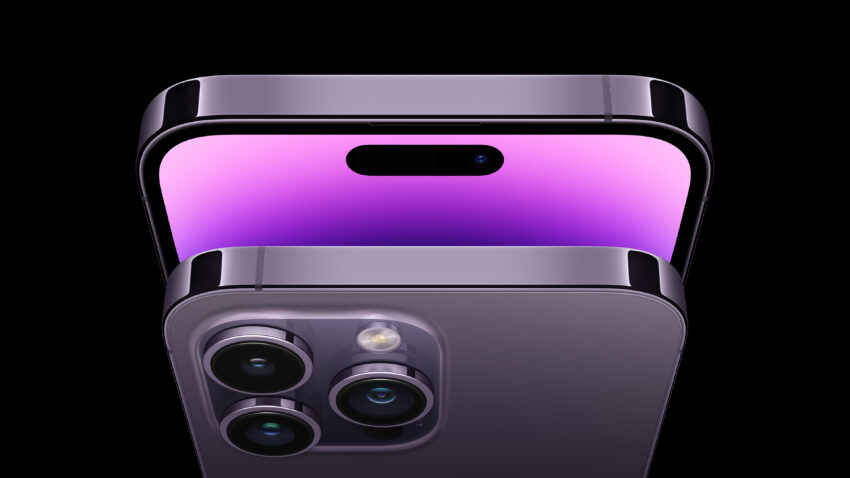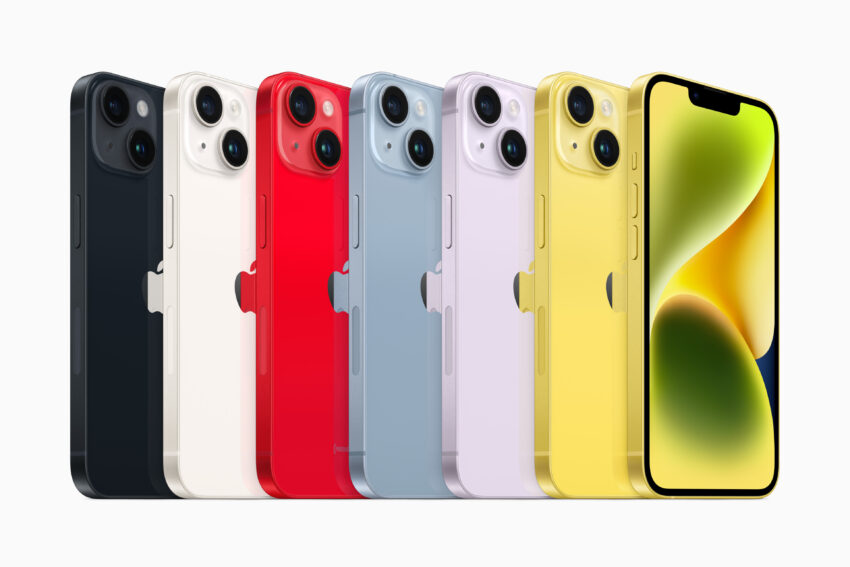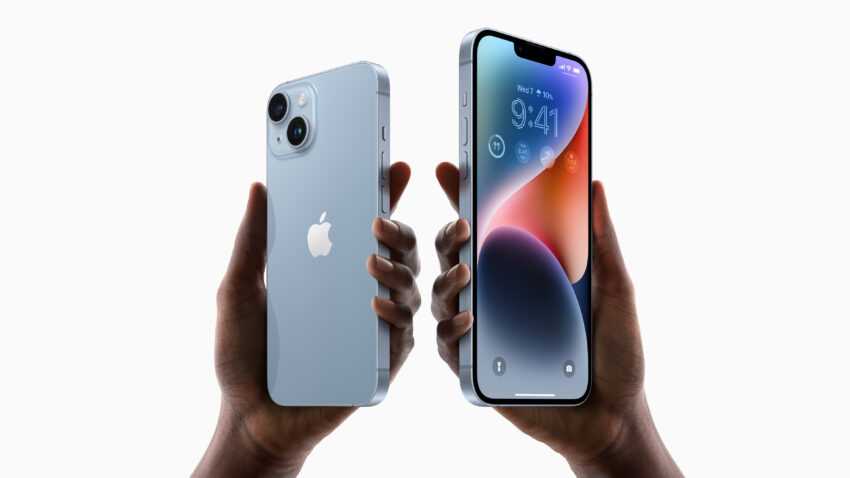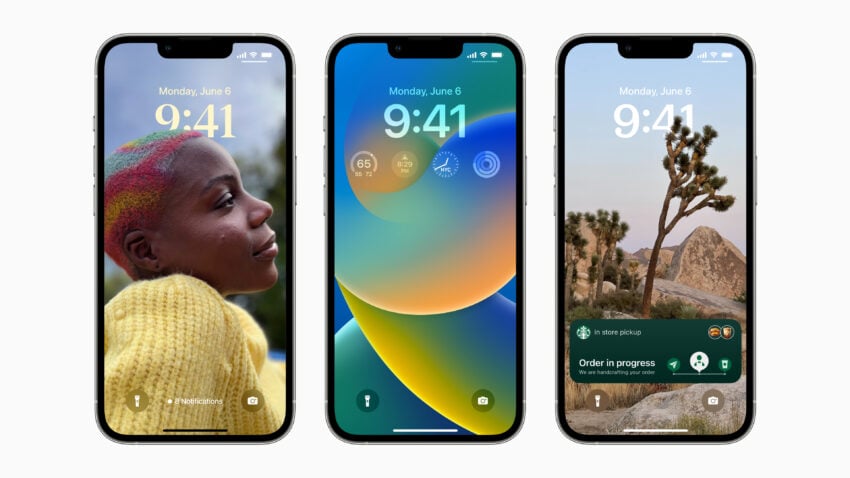Apple
11 Common iPhone 14 Problems & How to Fix Them
Apple iPhone 14, iPhone 14 Plus, iPhone 14 Pro, and iPhone 14 Pro Max owners are complaining about a variety of bugs and performance issues. Fortunately, there are ways to fix many of these problems.
If you run into issues on your iPhone 14, there’s a good chance you’ll be able to fix the problem, or problems, before Apple pushes new software or you’re forced to get in touch with Apple customer support.
In this guide we’ll take you through fixes for some of the most common iPhone 14, iPhone 14 Plus, iPhone 14 Pro, and iPhone 14 Pro Max problems.
Our list includes potential remedies for Wi-Fi issues, fixes for Bluetooth problems, and several other extremely common iPhone 14 issues.

Before you start playing around with your new iPhone’s settings, make sure your iPhone 14 is updated with the latest version of iOS 16.
New software always has the potential to fix bugs and performance issues. For more on the latest version of iOS 16, check out our guide.
Table of Contents
How to Fix iPhone 14 Black Screen Issue
Recent versions of iOS 16 have caused black screen (also known as the black screen of death) issues on various iPhone 14 models. Users report the device stops responding to swipes, button presses, and/or gestures.
If your iPhone 14’s display goes black and the device stops responding, follow these instructions.
- Press volume up.
- Press volume down.
- Hold down the side button and continue holding it for a minute.
These steps come straight from technical support at the Apple Store and they should return your device to a normal state.
How to Fix iPhone 14 Battery Life Problems
Most iPhone 14 users are getting excellent battery life right now. However, some owners are seeing the battery drain faster than it should.
If your iPhone 14’s battery suddenly starts draining faster than it normally does, take a look at our list of fixes for iPhone 14 battery life issues.
If the problems are really bad, you might be looking at a hardware issue. If that’s the case, you’ll want to get in contact with Apple customer service and/or take your iPhone 14 into an Apple Store.
How to Fix iPhone 14 Missing 5G
The iPhone 14, iPhone 14 Plus, iPhone 14 Pro, and iPhone 14 Pro Max all support 5G connectivity. However, you need to be on a plan that supports 5G.
If you go into the Cellular section of your phone’s Settings app and you don’t notice any options for 5G, this isn’t a bug. It most likely means you aren’t on a 5G-enabled plan with your carrier. If that’s the case, you’ll only see “LTE” and “4G.”
In order to make use of your carrier’s 5G network you’ll need to change/upgrade your plan. Before you do so, make sure 5G service is available in the areas you frequent most. Check the maps below for more information:
If your iPhone 14 model is on AT&T, you might notice that your phone is connected to 5Ge when it’s not connected to a Wi-Fi network. This isn’t AT&T’s 5G network. 5Ge stands for 5G Evolution and it’s a rebranding of the carrier’s LTE-A service.
How to Fix iPhone 14 Bluetooth Problems
If your iPhone 14’s suddenly unable to connect to one or more of your Bluetooth devices, you’ll want to force your device to forget the Bluetooth connection that’s not working. Here’s how to do that:
- Head into the Settings app.
- Tap Bluetooth.
- Select the connection using the “i” in the circle.
- Tap “Forget this Device”.
- Try reconnecting to the Bluetooth device.
If that doesn’t work, you can try resetting your iPhone’s Network Settings:
- Go into your Settings app.
- Tap General.
- Tap Transfer or Reset iPhone.
- Tap Reset.
- Tap Reset Network Settings.
This process will take a few seconds to complete. It will also cause your iPhone to forget known Wi-Fi networks so make sure you’ve got your password(s) handy.
You can also try reverting your iPhone 14’s settings back to the factory defaults. This should only be done as a last resort. Here’s how to do that:
- Head into Settings.
- Tap General.
- Tap Reset Transfer or Reset iPhone.
- Tap Reset.
- Tap Reset All Settings.
- Enter your passcode if you have one enabled.
If none of those fixes work, you should contact Apple’s customer service. If the product you’re trying to connect to isn’t made by Apple, contact the company that makes the product.
How to Fix iPhone 14 Wi-Fi Problems
If you’re seeing slower than normal Wi-Fi speeds and/or dropped Wi-Fi connections, here are some potential fixes that have worked for us in the past.
Before you start messing around with your phone’s settings, you’ll want to investigate the Wi-Fi connection causing problems. If you’re on your home Wi-Fi network, try restarting your router.
If you’re confident there aren’t any issues with the router itself, check Down Detector and see if others with the same internet provider are having similar issues in your area.
If you can’t access the router your iPhone 14 is connected to, or if you’re positive the issue has nothing to do with your ISP/router, head into your iPhone 14’s Settings app.
In here, you’ll want to forget the Wi-Fi network you’re having issues with. Here’s how to do that:
- In Settings, tap Wi-Fi.
- Select your connection by tapping the “i” in the circle.
- Tap Forget this Network at the top of the screen. (Note: This will cause your iPhone to forget the Wi-Fi password so you’ll want to have that handy.)
If this doesn’t work, try resetting your Network Settings:
- Go to your Settings app.
- Tap General.
- Tap Transfer or Reset iPhone.
- Tap Reset
- Tap on Reset Network Settings.
If none of those help, you’ll want to check out Apple’s guide to Wi-Fi problems.
How to Fix iPhone 14 Charging Problems
Some iPhone 14 users are running into charging issues and most of the problems are related to wireless charging.
If you encounter an issue with wireless charging, you should try hard resetting your iPhone 14. To do this, press and release the volume up button, press and release the volume down button, and then hold down the side button until the phone shuts off. Turn the device back on and see if charging works normally.

If you’re using an iPhone case to store credit cards or security passes, you’ll want to remove those before charging your phone. You also might try taking your case off and try charging your iPhone 14 that way.
How to Fix iPhone 14 Cellular Data Problems
If your iPhone 14 suddenly displays a “No Service” symbol and you can’t connect to your cellular network, here are a few fixes to try.
First, make sure there isn’t an outage in your area. Check social media for reports and/or get into contact with your service provider on social media. You can also check Down Detector and see if others in your area are having similar issues.
If the issue is unrelated to a network outage, you’ll want to restart your iPhone and see if that fixes the issue. If that doesn’t work, try turning Airplane Mode on for 30 seconds before turning it off.
If you still can’t get it to work, you’ll want to try shutting off Cellular Data completely. To do that, here’s what you need to do:
- Go to the Settings app.
- Tap Cellular.
- Toggle Cellular Data to off.
- Leave it off for a minute and then toggle it back on.
How to Fix iPhone 14 Sound Problems
Your iPhone 14’s speakers should project loud, crisp audio. However, if your sound starts to crackle or sound muffled, here are a few things you can try before getting in contact with Apple customer service.
First, try restarting your iPhone. If sound coming from the phone is still missing or distorted, make sure there isn’t debris blocking the speaker grille or your device’s Lightning port located on the bottom of the device.
If you start noticing a sudden drop in call quality, restart your phone. You’ll also want to check the device’s receiver to make sure it’s not blocked by debris or your screen protector (if you have one). You can also try removing your case (if you’re using one) to see if that helps.
If your iPhone’s microphone suddenly stops working or starts randomly cutting out, try restarting your phone.
If the microphone is still busted, you can try restoring your device from a backup. If restoring doesn’t work, you’ll want to get in touch with Apple because you might be dealing with a hardware problem.
How to Fix iPhone 14 Activation Problems
If you’re setting up your new iPhone 14 and you’re unable to activate it properly, here are a few things you can try.
First, make sure Apple’s systems are up and running. You can do that over here on the company’s System Status page. If you see green next to iOS Device Activation, Apple’s services should be working normally.
You’ll also want to make sure you’re running the latest version iOS 16. The iPhone 14’s iOS 16.0.1 update fixes an issue with activation and migration during the setup process. If it’s still not working, try these fixes:
- Make sure you have an active plan with your wireless carrier.
- Restart your phone.
- Check for a carrier settings update. Go into Settings > General > About. If an update is available, you’ll see a prompt to select OK or Update.
If none of those work, get in contact with Apple or your service provider.
How to Fix iPhone 14 Face ID Problems
If you’re having issues with Face ID, here are a few things you can try.
First, make sure your iPhone 14 is running the latest version of iOS 16. If you’re running the latest version of iOS 16 and you’re seeing issues, head into your Face ID settings.
- Go to Settings.
- Head into Face ID & Passcode. Note that you’ll have to enter your passcode (if you have one) to gain access.
Once you’re in there, make sure Face ID is setup on your phone and that all of the features you’re trying to use Face ID with are currently turned on.
If you’re having issues using your face to unlock your phone, make sure you’re actively looking at the screen.
If you constantly change your appearance, you might need to add an alternate appearance to Face ID. Here’s how to setup an alternate appearance:
- Go to Settings.
- Tap Face ID & Passcode.
- Tap Set Up an Alternate Appearance.
You’ll also want to make sure there isn’t any debris (dirt, dust, etc) blocking your phone’s FaceTime camera. The FaceTime camera is located on the front of the phone.
If your phone isn’t registering your face when you’re setting up Face ID, make sure you’re scanning it in a well-lit room. You also might need to bring the iPhone closer to your face or bring it more level.
How to Fix iPhone 14 Overheating Problems
If your iPhone 14 is running hot, here are a few things you can try.

First, try removing your case (if you’re using one) and see if that helps. You’ll also want to try turning the phone off and back on. You can also try putting the phone into Airplane Mode.
You’ll also want to check out this guide to keeping your iPhone within acceptable operating temperatures. This will come in handy if you often use your iPhone in hot environments.
Downgrade iOS
If nothing above works, and you can’t wait for Apple to push the next version of iOS 16 and/or you don’t get a working solution from Apple customer service, you can try downgrading back to the previous version of iOS if the option is available. This could help improve your phone’s performance.
If you don’t know how to downgrade an iPhone’s software, take a look at our walkthrough.
Restore as New
If your iPhone 14’s problems are really bad, you can try restoring your phone as new. You can do this via Finder, iTunes, or iCloud. This should only be used as a last resort.
Install iOS 16.6.1 for Better Security | ||||||||||||||||
 | ||||||||||||||||
If security is important to you, think about installing Apple's iOS 16.6.1 update on your iPhone right away. iOS 16.6.1 isn't a huge upgrade, but it does have two important security patches for your device on board. If you're interested in what they patch up, here's Apple's guide. As for older software, the iOS 16.6 update delivered 16 security patches. For more information about the changes, check out Apple's rundown. iOS 16.5.1 brought two security patches to iPhone users If you want to learn more, head on over to Apple's website. The company's iOS Security Response 16.5.1 (c) update also included a security update and you can learn more about it right here. iOS 16.5 brought a ton of security patches to the iPhone. You can find out more about them over on Apple's security site. iOS 16.4.1 included two security upgrades . You can learn more about the pair right here. Apple's iOS 16.4 update had a substantial number of patches on board. You can read about them in detail over on Apple's security site. The iOS 16.3.1 update had three security patches on board including one for an actively exploited vulnerability. For more on the security contents of iOS 16.3.1, check out Apple's security page. iOS 16.3 brought 10+ new security patches with it and you can learn more about all of those right here. In addition, the software came with support for physical security keys for Apple ID. These will beef up your account security by requiring a physical security key as part of the two factor authentication sign in process. Learn more about the change right here. If you skipped iOS 16.2, you'll get its changes with iOS 16.6.1. iOS 16.2 brought a ton of important security patches with it and you can dig into the details on Apple's security site. The update also brought end-to-end encryption to iCloud, iMessage, iPhone backups, Notes, Photos, and more. If you want to learn more about it, head over to Apple's guide. If you decided to missed iOS 16.1.2, you'll get its solitary security patch with your upgrade. Learn more about it right here. If you skipped iOS 16.1.1, you'll get its security patches when you upgrade. You can learn more about them right here. If you missed the iOS 16.1 update, it brought 19 security patches to the iPhone and you can learn about the particulars of those over on Apple's website. If you failed to download iOS 16.0.3, it had one security patch on board, a fix for a potential exploit within the Mail app. For more about the fix, check out Apple's security site. If you're still running iOS 15 your iPhone, you'll get a bunch of other patches when you upgrade. iOS 16.0 brought a ton of security patches to the iPhone. If you're interested in the exact nature of these improvements, you can read about them over on Apple's security website. In addition to those patches, iOS 16 brings some additional enhancements to privacy and security including Safety Check which, according to Apple, will help "people in domestic or intimate partner violence situations review and reset the access they’ve granted others." The feature also resets system privacy permissions for apps and restricts Messages and FaceTime to the device on hand. Apple's also made some improvements to Passkeys in Safari. iOS 16 brings a brand new sign-in method that's end-to-end encrypted and safe from phishing and data leaks. | ||||||||||||||||
| ||||||||||||||||
















Barry Doubleday
03/09/2023 at 10:09 am
I’m having issues with the camera taking several pics at once. Took it to the store and they did an software upgrade but still having issues